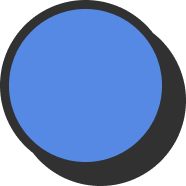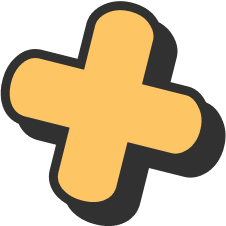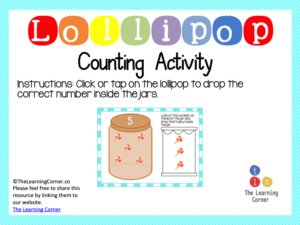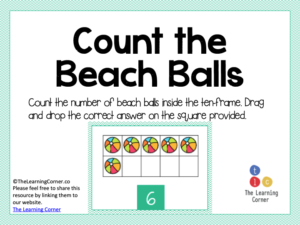
Knowing the value of a number will be a lot easier if you have things to represent it with. Just imagine using marbles to represent 8,791! That’s a lot of marbles and you might not even have that amount of marbles readily available.
To help represent these big numbers, you might want to use a set of base ten blocks. There are four different types of blocks.
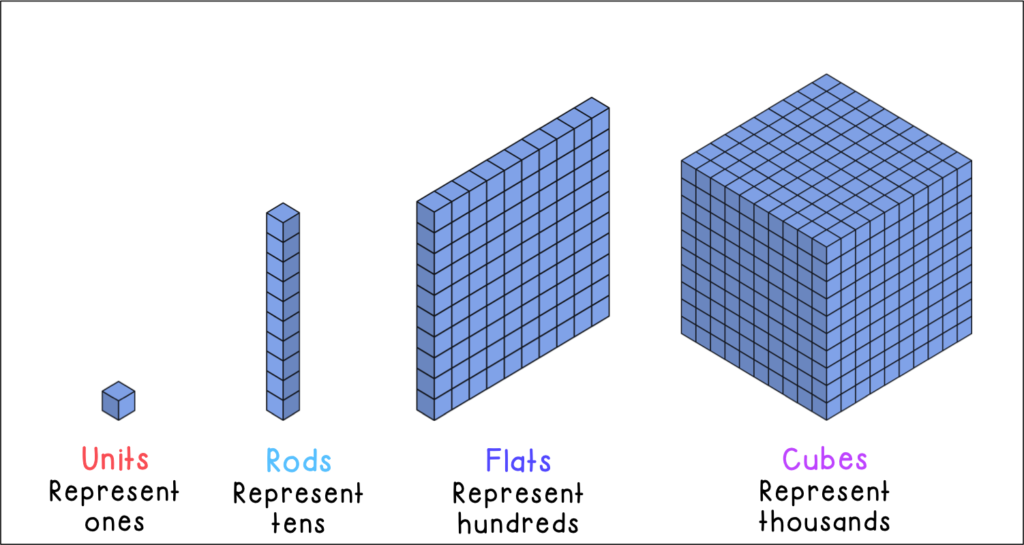
- Unit – These are the smallest blocks. These represent the ones place value. Ten of these unit blocks will give you a rod.
- Rods – They are long and a stack of ten unit blocks that show the value of ten. These represent the tens place value. Ten of these rods will give you a flat.
- Flats – Flats are square blocks that show ten rods combined. These represent the hundreds place value. Ten of these will make a cube.
- Cubes – These are the biggest blocks. Cubes represent the thousands place value.
If you want to represent the number 1,234 using base ten blocks you’re going to need 1 cube, 2 flats, 3 rods, and 4 units.
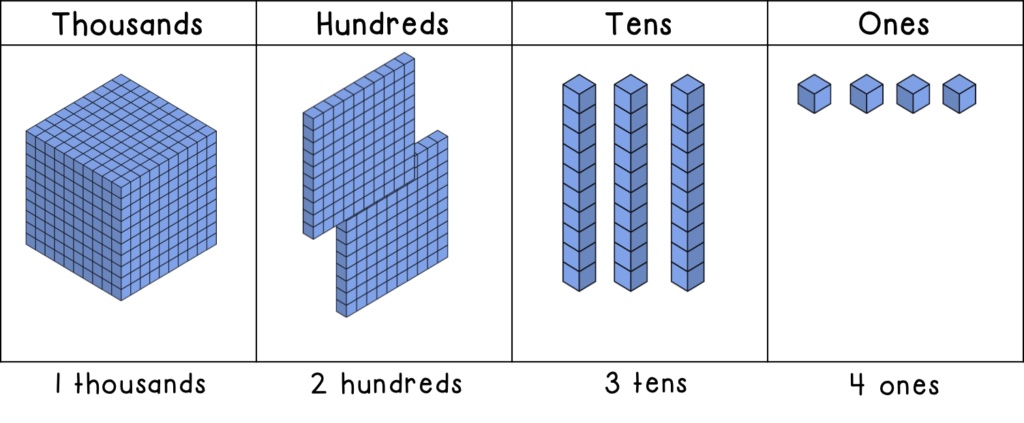
Ideally, it is best for students to explore these blocks on their own. Let them build first and discover how each unit is related to each other. Base ten blocks are very helpful to physically represent numbers in place value and number operations such as addition, subtraction, multiplication, and addition. These can even be used to represent decimals. The flexibility of being able to rename the numbers as shapes at first eases the overwhelming idea of numbers.
Here’s an activity that uses base ten blocks to show place value. This activity asks you to represent numbers using base ten blocks up to the hundreds place.
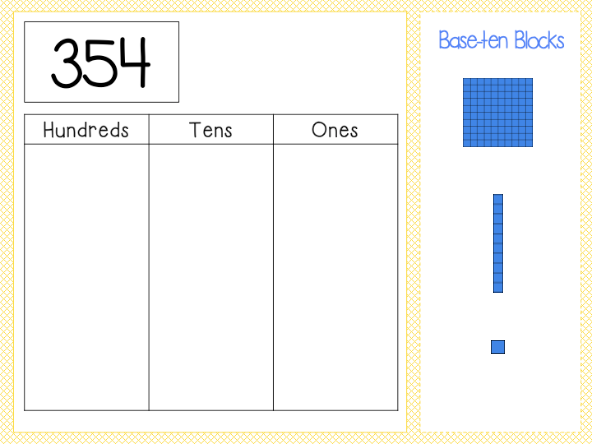
Try it out! Join our list.
